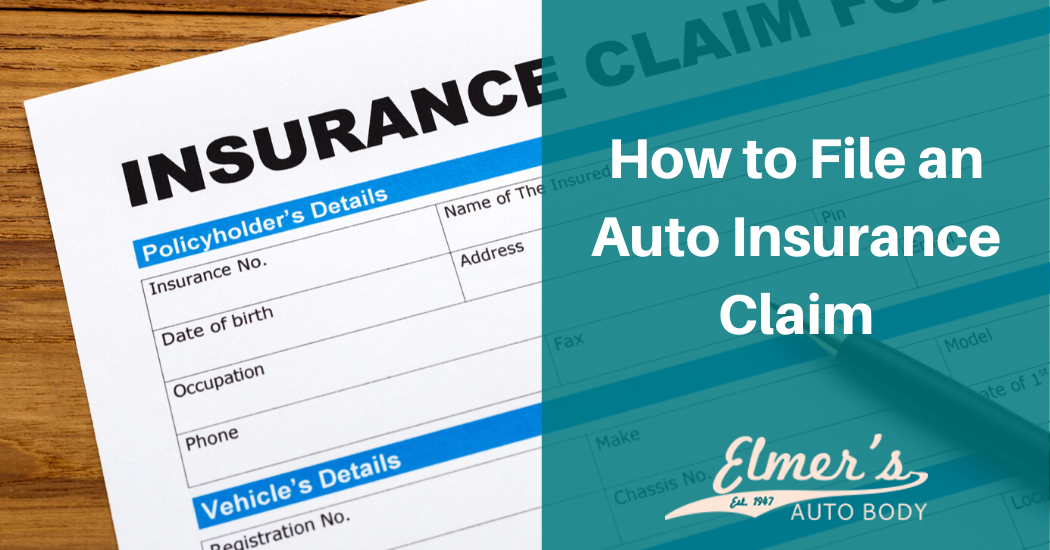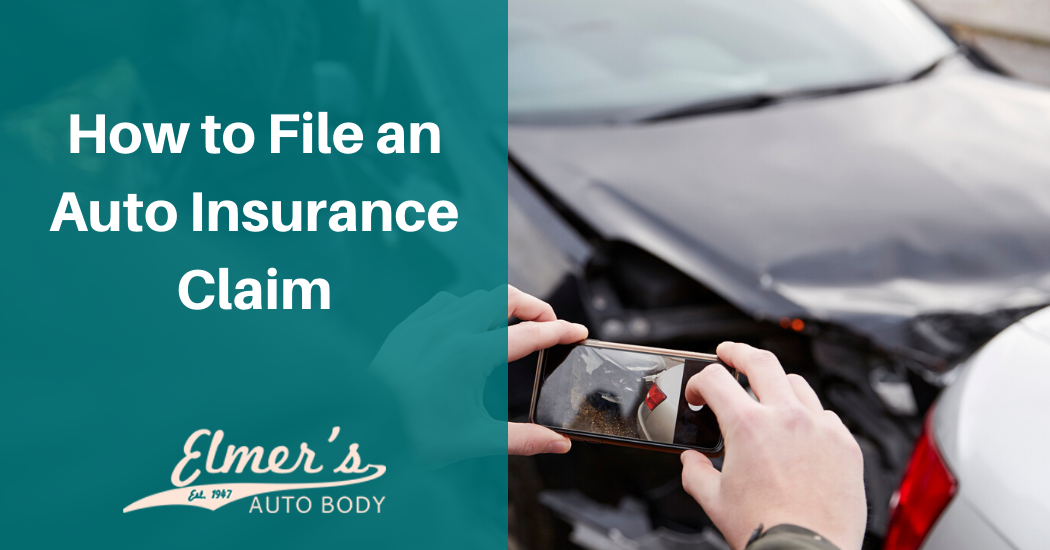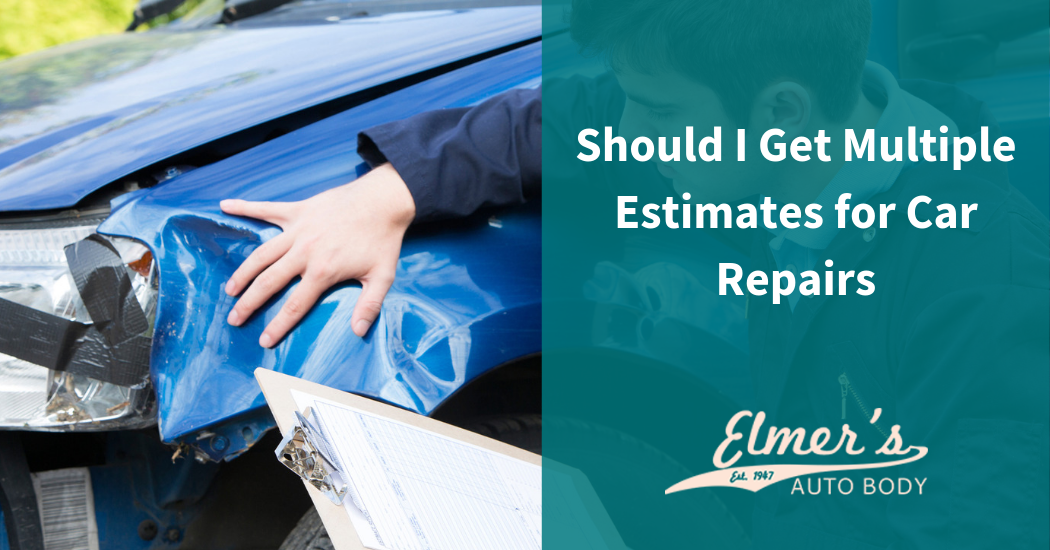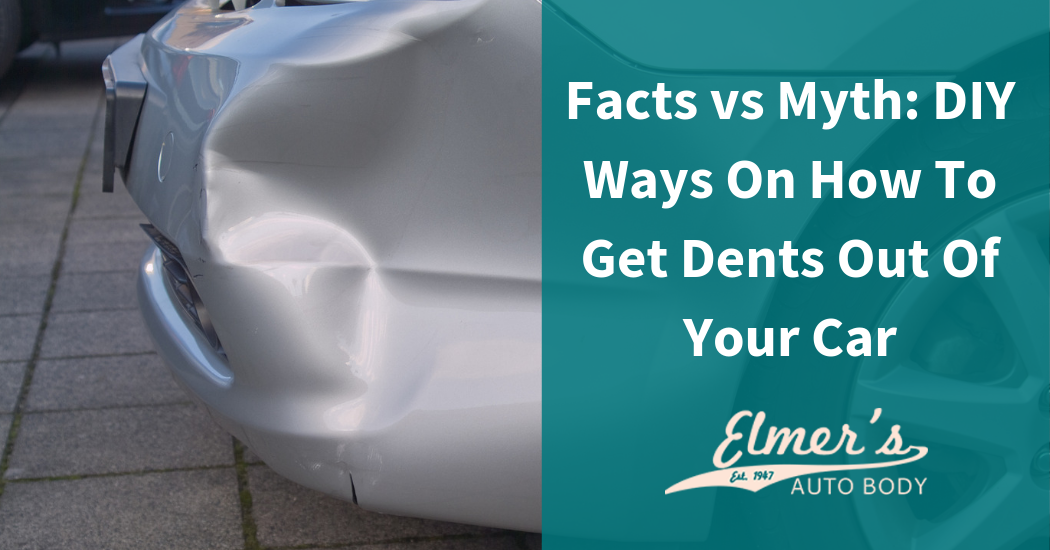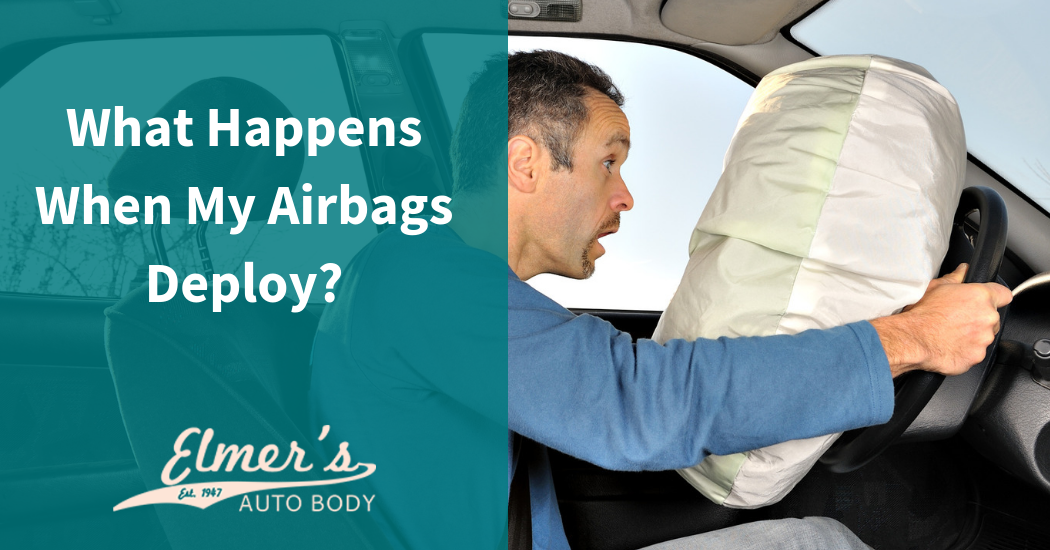When you are involved in an automobile accident in New Jersey, you will likely have to deal with the auto accident claims process. Filing an auto accident insurance claim can help you to secure money to pay for your vehicle repairs and the medical expenses that you might have incurred as a result. Most people do not have car accidents very frequently and may be uncertain how the claims process works. Elmer’s Auto Body works with many different insurance companies when we repair vehicles for our customers in South Jersey. Here is some information about filing an insurance claim to help you understand the process.
What insurance claims are
Insurance claims are formal requests that are made to insurance companies for money to pay for vehicle repairs and other losses that have occurred during an accident that is covered by your policy. Once you file a claim, an adjuster will likely be sent from the insurance company to investigate the accident and to determine the extent of your losses. If your claim is approved, the insurance company will send you a check to pay for your losses.
What to do after a loss
You should call the police to report your accident immediately after it occurs. Exchange your information with the other involved driver. Under the law, you must report any accident that involves property damage of more than $500 to the police and should remain at the scene until the officer arrives. You should also contact the other driver’s insurance company to report the accident and allow the insurance company to inspect the damage to your vehicle before it is repaired. In the interim, you should protect your car from additional damages. Otherwise, the insurance company can refuse to pay for any damage that subsequently occurs.
Determination of fault
In New Jersey, more than one person can be at fault for causing an accident under the state’s comparative negligence law. If you share some of the fault, you will only be able to recover damages if your percentage of fault is less than that of the other driver. The settlement that you will receive will be reduced by the percentage of fault that is attributed to you. For example, if you are found to be 10% at fault and suffer $10,000 in losses, your net settlement will be reduced by $1,000 for a total recovery of $9,000.
It is important to understand that a traffic citation that was given to the other driver does not mean that the driver is completely responsible for its cause. You may still be determined to have contributed to the accident.
If you file a claim with an insurance company other than your own, you should remember that the insurance company is primarily obligated with its insured. If you and the other driver disagree about what happened, the other driver’s insurance company will defend the other driver just like you would expect your company to do for you.
When should you file an insurance claim?
In some cases, people decide against filing insurance claims because of concerns about their insurance rates going up. If your damages do not exceed your deductible or do so by only a few hundred dollars, you probably should avoid filing an insurance claim.
When you decide to file a claim, your insurance company might raise your rates. In some cases, an insurance company may cancel a policy. However, you likely should file an insurance claim if somebody was injured or when it is unclear who was at fault. Another scenario when it may be a good idea to file a claim is when you are unable to pay for the damages out of your pocket or have suffered a total loss.
How to file your claim
If you have decided that you need to file an insurance claim, there are several steps that you should take. Immediately after your accident, call the police and wait for the officers to arrive. You may be confused about what happened right after an accident, and the police can help to sort out the details for you. If the other driver is belligerent, having the police handle the situation can protect your safety. Officers can also help you if you are injured. Police reports can help you after your accident when it is time to file a claim.
Exchange information with the other driver and document everything
After an accident, you are required to exchange information with the other driver. Provide your license and insurance information to the driver and obtain his or hers. You will want to get the driver’s phone number, address, and name. If you can, take a photograph of his or her license and insurance card. If the driver is not cooperative, ask the police to get the information for you. After you have exchanged information, write down everything that you remember about the accident. If you were injured in the accident, keep your doctor’s reports and medical bills from treating your injuries.
File your accident report
New Jersey requires people to report accidents involving damage that exceeds $500 to the state within 10 days using an accident report form from the New Jersey Department of Transportation. Make certain to submit your form as required. Once you have done this, talk to your insurance agent about what else you might need to file your insurance claim.
Make sure to ask how long you will have to file a claim. Some companies provide limited windows for filing claims, and you will want to make certain that you file yours on time. It is a good idea to try to file your claim as soon as possible. When you do file your claim, the insurance company will ask you some basic information, including the date, time, and location of the accident, the contact information for all who were involved, and a description of what occurred. If you have already obtained estimates, you will be asked to provide them as well.
File your claim
When you are ready to file your claim, most insurance companies allow their insureds to do so online or by phone. You might also choose to file your claim using a claim form and emailing or faxing it.
After your claim has been filed, the insurance company will likely send an insurance adjuster to investigate. He or she will want to survey the damage and talk to you about what occurred. After he or she determines the accident’s cause and the extent of the damage. The adjuster will then write a report for the insurance company in which he or she will make recommendations for the amount the insurance company should pay.
If you are dealing with the insurance adjuster of the other driver’s insurance company, make certain that you have thorough documentation about your accident and any damage or injuries that you suffered. If you are unable to drive your vehicle, your insurance company will tell you whether you can secure a rental under the policy.
Assignment to a claims specialist
After you have filed your insurance claim, the company will assign it to a claims specialist such as an adjuster. The adjuster might meet with you in person or call you on the phone. If your vehicle has been towed to a garage, the adjuster will talk to the shop and review any repair estimates.
Your adjuster may tell you which garage to take your vehicle to and make arrangements for you to obtain a rental vehicle while you wait for the repairs to be completed. In addition to your vehicle damages, the adjuster will also take a look at any personal injury claims that you might have. Providing the adjuster with the information that they need will help your claim to move faster. The damages to your vehicle portion of your claim may be handled separately from your injury claim. If you suffered serious injuries, you might want to consult with a personal injury attorney for help with that part of your claim.
Diminshed value claim
When you suffer a partial loss instead of a total loss from an accident, your car will still have some value. However, being in an accident may cause your vehicle to lose some of its value. You might want to claim its diminished value to recover additional compensation.
Total losses and gap insurance
Some accidents result in a total loss. This occurs when the costs of repairing your vehicle exceed its value. If you still owe money on your vehicle loan, you will want to ask your insurance adjuster about your gap insurance. Gap insurance covers the difference between the loan balance and the amount of your settlement so that you will no longer owe money to the auto loan company.
Cost to repair your vehicle
After the adjuster has finished his or her investigation, you should receive an estimate of the cost to repair it. If the claim is with your own insurance company, you will be responsible for paying your deductible. The repair estimate will list the work that needs to be completed and whether the company will use generic or aftermarket parts. Once you agree, the repairs can be made. If you do not get your company’s approval for the repairs, you might not receive money for them. This makes it important for you to work with your insurance company to allow them to investigate the damage and reach an agreed-upon settlement with you.
You should not approve or accept any repairs until you have received the approval of your insurance company. Your insurance policy is a contract, and insurance companies reserve their rights to investigate claims before repairs are made. This means that if you fail to get the approval of the insurance company, any repairs that you complete may go unreimbursed.
Types of coverage for car accidents
Auto accident claims may be paid out of collision coverage, comprehensive coverage, personal injury protection coverage, or liability coverage. Your insurance agent can explain the different types of coverage that you have and will provide coverage based on your policy. You might also have the ability to file a claim with the other driver’s insurance company if you suffered serious injuries and the other driver was at fault.
Determining whether your vehicle can be repaired
The insurance company will decide whether your vehicle should be repaired or replaced. It will also decide whether to reimburse you for the actual cash value of your vehicle if it is determined to be a total loss. This is the amount that your car could have sold for on the date the accident occurred.
If it is not economically feasible to repair your vehicle, it will be considered to be a total loss. This is when the cost of repairing a vehicle will either equal or exceed its actual cash value. Many insurance companies declare vehicles to be a total loss when the damages equal 80% of the actual cash value. This is because hidden damages are often discovered after repairs have begun.
You can choose a repair shop that you want. Your insurance company will then try to reach an agreement with your preferred shop. If your insurance company cannot do so, it will give you the names of area shops that can complete the repairs for the determined price. You are also able to ask your insurance company to recommend a repair shop that will agree to make the repairs at the agreed-upon price.
Insurance companies are not obligated to use new parts to repair your vehicle. They are only required to restore your vehicle to the condition it was in before your accident. They can pay for after-market parts or original equipment manufacturer parts. If newer parts are used to repair your vehicle, the insurance company will not be required to pay for them. For example, if your engine is seven years old, the company is only required to replace it with a seven-year-old engine instead of paying for a new one. If you do replace a damaged engine with a new one, you will be responsible for paying the difference in value between the new engine and one that is seven years old.
You do not have to accept the use of after-market parts under New Jersey law. However, if you choose to use OEM parts that are more expensive, you may have to pay the difference in cost. Your insurer must also tell you on the appraisal report which parts are after-market parts.
Insurance companies must use one of three methods for determining the settlement in a total loss claim. These are methods that have been approved by the New Jersey Department of Banking and Insurance.
The first method involves averaging the retail values of vehicles that are substantially similar as listed in the Automobile Red Book and the N.A.D.A. Official Used Car Guide.
The second method involves obtaining a dealer quote for a substantially similar car that is available for purchase at a dealership within 25 miles of where your car is normally kept. The final method is to use an approved database to obtain fair market values.
If these three methods cannot be used to value your vehicle, your insurance company will explain to you in writing how the amount of your offer was calculated. Your company is also required to give you a list that shows the deductions, additions, and sales tax that apply to your vehicle.
If your vehicle had preexisting damage, the insurance company is allowed to deduct it from the value of your vehicle. This means that your vehicle would be worth less, and you may receive a lower settlement offer for the total loss of your vehicle.
Having trouble with an insurance company
As a consumer, you enjoy the right to a fair claims settlement process. If you do not understand something or have trouble communicating with the adjuster, talk to your insurance agent. You can also ask to speak to a supervisor. In most cases, problems that arise can be quickly resolved.
If the claims process is dragging on too long, call the commissioner’s office to learn what you can do. You might also talk to an attorney about a potential bad faith insurance claim.
Get help from Elmer’s Auto Body
Elmer’s Auto Body has been helping customers from across South Jersey with auto body repairs for more than 70 years. If your vehicle has been damaged in an accident, we can work with your insurance company to get the repairs that you need to restore your vehicle to its previous condition. We offer expert auto body repairs and can make your vehicle appear as if the accident never occurred. Contact us today by filling out our online contact form or by calling one of our three convenient locations.

